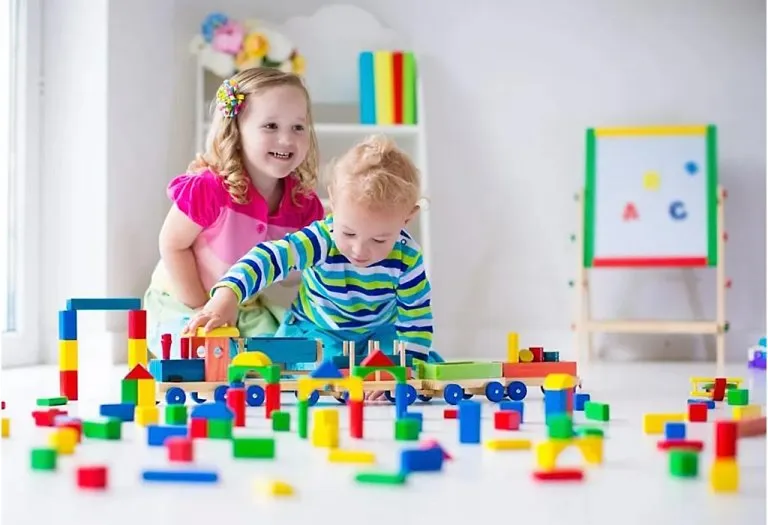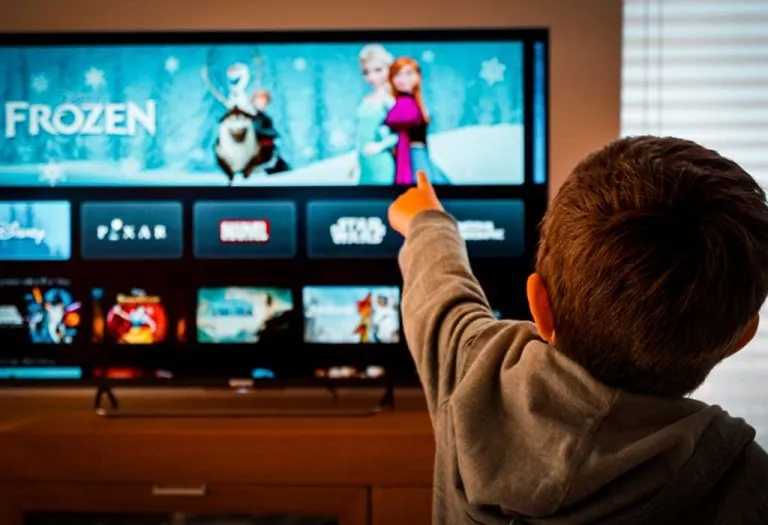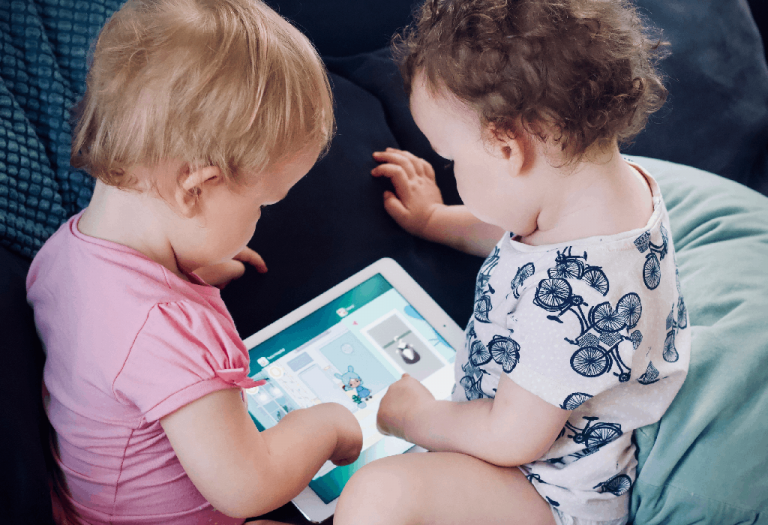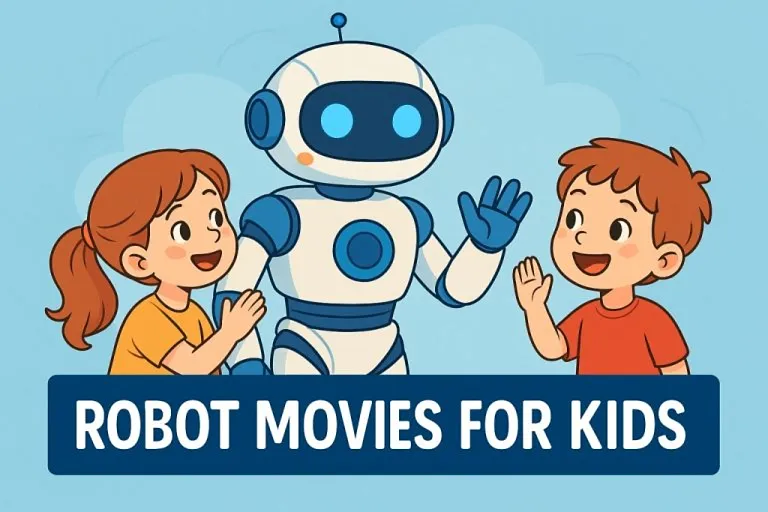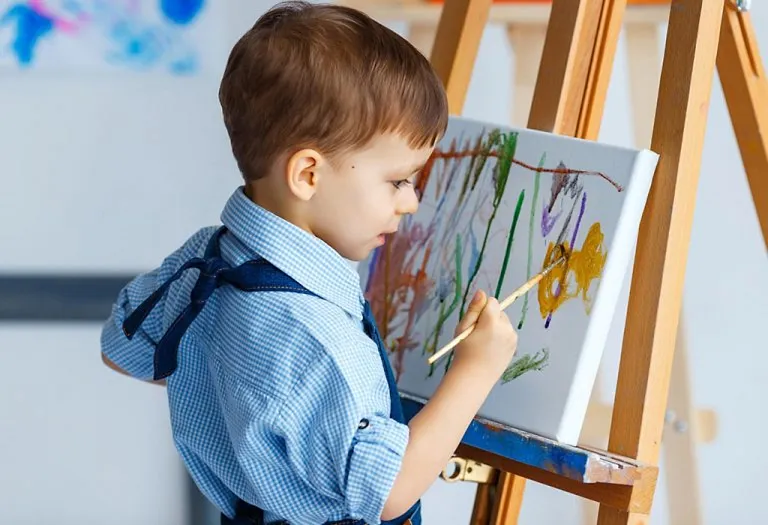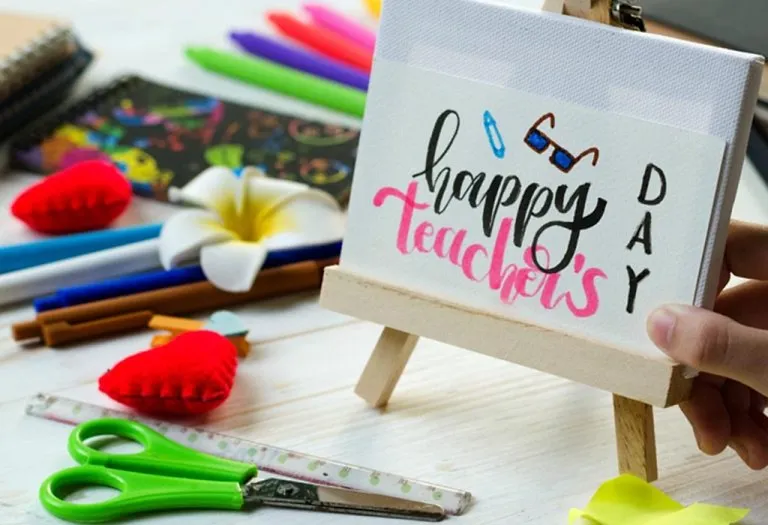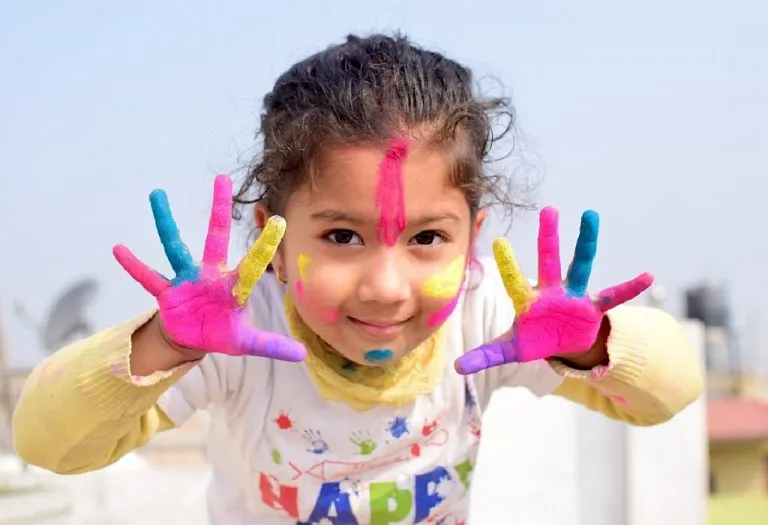Are Too Many Toys Harming Your Child’s Development?
- How Many Toys Are “Too Many”?
- Why Are Parents Tempted to Buy More Toys for Their Children?
- Why Shouldn’t Children Be Given Too Many Toys?
- Advantages of Having Minimum Toys
- What Can Parents Do?
- How Many Toys Should a Child Have?
- FAQs
Holidays are not far and you must be thinking of ways to keep your kids busy, right? If you are again planning to buy toys for your kids, then think again! Don’t your kids have too many toys, already? What parents must know is that excessive toys do not enhance creativity in children. According to child behaviour experts, too many toys distract kids and reduce their focused. Many studies have suggested that playing with too many toys could affect the concentration level of kids and even hamper creativity, life skills, social interactions, imagination, mental health, and team spirit. Now, you must be wondering “should I stop giving my kids toys? If not, how many should I give them?” Read on to know if and how toys affect child development.
How Many Toys Are “Too Many”?
In today’s times, children do not have one or two toys, they have unlimited toys which is the problem. Parents are also sometimes responsible for this problem of ‘too many’ toys. Giving too many toys to your child does not help him much and makes him demand for more. According to some conservative avenues of thought, kids should not be given any toys at all. This made certain daycare centres around the world implement a ‘no-toys’ policy in the year 1992. As per a study by researchers at the University of Toledo, Ohio in the US, playing with too many toys curb the creativity of children, whereas playing with fewer toys can help in their overall development.
As a thumb rule, you could get your child a few select toys that will act as an aid to his various developmental needs. They could be toys that encourage reading habits (puzzles), music skills (classroom instruments), pretend-play (like playing house), sharpen their imagination and creativity (art sets), problem-solving skills (scrabble), stimulate physical activities (building blocks), etc.
Why Are Parents Tempted to Buy More Toys for Their Children?
Kids can’t buy toys for themselves. So, obviously, parents are the ones who are encouraging the habit and getting dozens of toys for their kids whenever they demand. There are a few reasons why parents of this age keep buying toys after toys for their kids:
- Some parents feel that their kid would lose out if they don’t buy the latest toys. With the aim of giving the best to their child, they buy every new thing available in the market.
- Some parents are themselves tempted by commercials that show new toys that they want those toys for their kids and think that those toys would make their kids happy.
- Some parents are too busy and use toys to appease the kids and fill in for the time that they cannot give to the child.
- Other parents give in to the demands of kids for more toys. And one of the worst things to do is when parents repeatedly bribe their kids with toys to get something done.
- Others may like the sense of luxury, opulence and status by getting more toys and expensive toys.
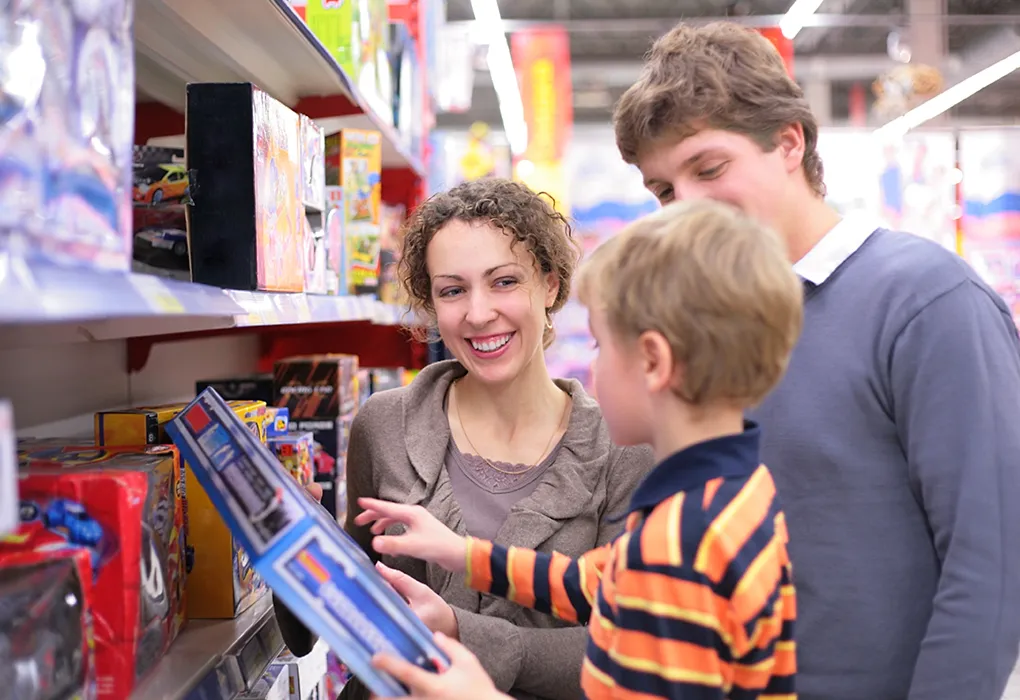
Why Shouldn’t Children Be Given Too Many Toys?
As a parent, you must know that too many toys harm a child more than they good. Too many toys can affect the development of a child whereas fewer toys can benefit him. Here are a few reasons why you must not give too many toys to your little kid:
- Toys are like an addiction and can become the root of other addiction when your kid grows up.
- If you give in to your kid’s demand for too many toys, he will take you for granted and keep asking for things.
- If you give in to the demands of your kid and give him toys whenever he asks, he will not value the things he receives. Kids do not value things if they get it whenever they ask.
- If your child has too many toys, there is a chance that he might waste things and not appreciate them.
- If they have too many toys, they will go from one toy to another. This might lessen their attention and concentration. Playing with too many toys can also cause a high level of distraction as a child grows.
- Kids have a better appetite at home with fewer toys. Bribing them with a toy that comes with a burger can only lessen their love for home food.
- Getting too many toys for kids can curb their creativity and imagination skills as they will not experiment with household stuff to create their own playthings.
- Playing with too many toys can also result in frequent boredom in children. Playing with one toy for a long time can irritate a child and he may look for new things to get over the boredom and even any kind of stress. Boredom comes easily because kids know they will get something new when they ask for it. Toys may turn into an addiction to fight boredom and stress. They may grow up and show the same traits.
- Kids with fewer toys have better social capabilities as they grow up because they have more time to converse and communicate with friends and family.
- Kids with fewer toys take care of things better because they have less and so they realise the value of those toys and hence keep them safe.
- Kids with lesser toys have more interest in reading, writing, art and other constructive activities. These activities help them value beautiful things, human emotions, interactions, conversations, sense of bonding and various other beneficial life skills.
- With lesser toys, kids become more resourceful in doing things with whatever is at hand. They learn to do more with less.
- If you thought more toys would keep your kids from fighting, then you are wrong. The more the toys, the more the possessiveness, selfishness, and territorial attitude. This causes more quarrels and inability to share, give and work as a team.
- Kids with fewer toys have neat and clean rooms and keep this habit later in life.
- Kids with fewer toys spend more time outdoors and engage in physical activities that are vital to their healthy mental and physical development.
Advantages of Having Minimum Toys
In our world, where buying things is a big deal, kids often end up with a ton of toys. But having fewer toys can actually be really good for both kids and parents. Here are 10 advantages of having minimum toys:
1. Encourages Creativity
With fewer toys, children are prompted to use their imagination and creativity to invent new games and activities. Instead of relying on pre-packaged narratives or electronic features, they learn to create their own stories and scenarios, developing essential problem-solving skills.
2. Promotes Resourcefulness
Limited toys teach children to make the most out of what they have. When faced with fewer options, they are encouraged to repurpose items, combine different toys innovatively, and find creative solutions to challenges. This fosters a sense of resourcefulness that can benefit them throughout their lives.
3. Reduces Overstimulation
A clutter-free environment with fewer toys can help children focus better and reduce overstimulation. Too many toys competing for attention can lead to sensory overload, making it difficult for children to engage deeply with any one activity. Parents can create a calmer environment that supports concentration and mindfulness by simplifying their play space.
4. Fosters Appreciation
When children have fewer toys to play with, they are more likely to appreciate and value the items they do have. Each toy becomes more meaningful, and children learn to take better care of their belongings. This not only instills a sense of gratitude but also teaches responsibility and respect for possessions.
5. Saves Money
Adopting a minimalist approach to toys can lead to significant financial savings for families. Parents can allocate their resources more wisely by purchasing fewer toys and avoiding impulse buys. Moreover, fewer toys mean less money spent on storage solutions and organizational tools, further reducing household expenses.
6. Teaches Organization Skills
Having fewer toys encourages children to keep their space organized and tidy. With less clutter, they can easily find and access their favorite toys, fostering a sense of orderliness and independence. Parents can also involve children in decluttering, teaching valuable organizational skills along the way.
7. Enhances Social Skills
With fewer toys vying for attention, children are likelier to engage in cooperative play with siblings, friends, or caregivers. Sharing becomes a natural part of the play experience as children learn to negotiate, communicate, and collaborate with others. These social interactions help develop empathy, perspective-taking, and conflict-resolution skills.
8. Promotes Quality Time
Minimal toys encourage families to spend quality time together engaging in activities beyond just playing with toys. Whether reading books, exploring nature, or pursuing creative hobbies, parents and children can bond over shared experiences that enrich their relationships and create lasting memories.
9. Reduces Environmental Impact
By consuming fewer toys, families can contribute to reducing waste and minimizing their environmental footprint. Many toys are made from plastic or other non-biodegradable materials, which can have long-term consequences for the planet. By choosing fewer, higher-quality toys made from sustainable materials, families can positively impact the environment.
10. Encourages Appreciation for Experiences
With fewer material possessions competing for attention, children learn to appreciate experiences and relationships over material goods. Whether it’s a family outing, a game night, or a simple meal together, these shared moments become cherished memories that shape children’s values and priorities as they grow older.
What Can Parents Do?
As wise parents, you can do a few things to resist the temptation of buying toys for your kids and to stop your kids from demanding more and more toys.
1. Space Management
Don’t create a huge toy storage space in your kid’s bedroom. Keep it small so that the toy space looks full and the desire for more is restricted due to lack of space. Teach your kid to give away to less privileged when the storage area overflows with too many toys.
2. Commercial Break
Keep your kid away from advertisements on TV and in malls that might encourage him to buy more toys. Television commercials can make your child demand new items every other day, so stop your child from watching too much of television every day and let him play outdoors.
3. Select Wisely
When selecting a toy, understand how it can help your child develop. Don’t buy for the sake of buying. Buy toys like puzzles or blocks as these can help your child’s brain development. So, find out the benefits of the toys and then pick it up for your kiddo.
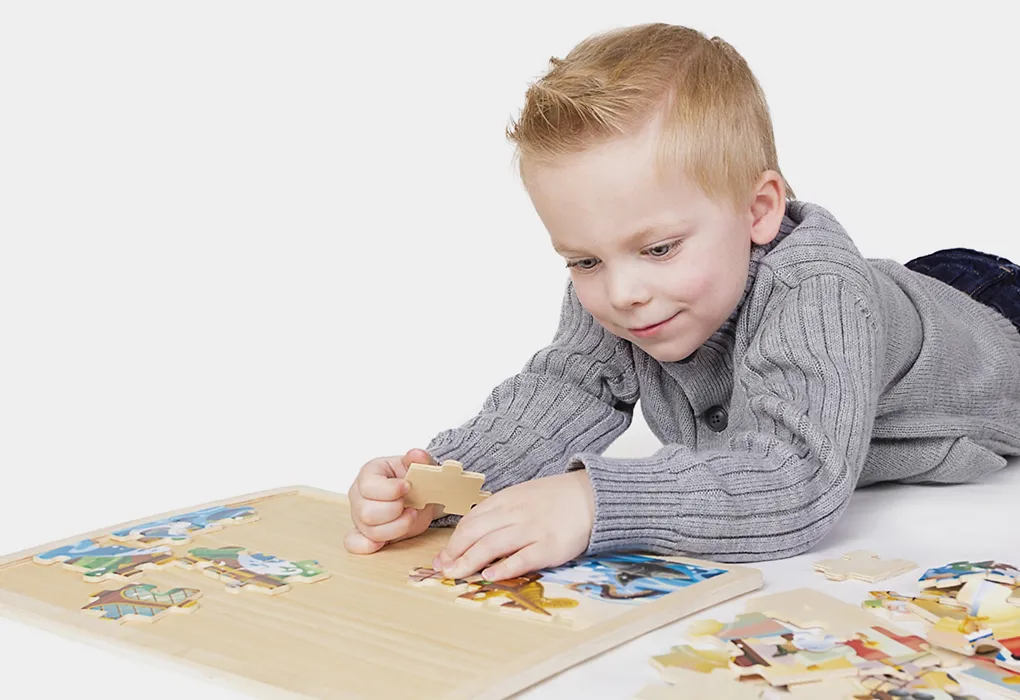
4. Break the Trend
Sometimes parents buy toys because of pressure. On seeing that other parents are buying expensive toys for their kids, you might be tempted to buy the same for your kid to make him happy, but you must realise that toys won’t make your child happy in the end. Break the trend, don’t follow what other parents are doing. Break the pattern and be a trendsetter in propagating the ‘less is more’ ideology. Make your kid realise the importance of what he has.
5. Reduce, Recycle, Reuse
Give your kid sturdy, long-lasting toys that become unforgettable. For instance, a jigsaw, when complete, that looks like your pet dog. Also, teach him to fix and reuse the toys.
6. Family Activities
When your child gets bored playing with one toy, don’t give him another. Try to shift his focus to family activities, sports, picnics, theatre, music, art, and all things that help in his overall development.
7. Create from Scrap
Help your kid create his own play stuff with scrap at home like a costume for a school fest or fancy-dress party, a birthday ‘origami’ gift with a card for a friend, a get-well-soon picture frame for an unwell cousin, etc. This will improve your child’s imagination skills and unleash his creative side.
How Many Toys Should a Child Have?
Determining your child’s ideal number of toys isn’t a one-size-fits-all situation. Several factors can guide your decision-making process.
1. Consider the Child’s Age
Younger children may benefit from a smaller selection of toys to prevent overwhelm, while older children may enjoy having a slightly larger variety to choose from.
2. Rotate Toys
Instead of keeping all toys out at once, consider rotating them periodically. This keeps playtime fresh and exciting while also reducing clutter.
3. Encourage Multi-Purpose Toys
Look for toys that can be used in multiple ways or have open-ended play possibilities. These types of toys spark creativity and can provide endless entertainment.
4. Prioritize Favorites
Pay attention to which toys your child consistently gravitates toward and prioritize keeping those accessible. These are likely the toys that bring them the most joy and engagement.
5. Quality Over Quantity
Invest in well-made, durable toys that will stand the test of time. Quality toys tend to be more engaging and can foster deeper play experiences.
FAQs
1. Is there a link between excessive toys and decreased attention span in children?
Excessive exposure to a wide array of toys might overwhelm children, making it difficult for them to focus on one task or activity for an extended period. This could potentially contribute to a shortened attention span.
2. Are there concerns about overstimulation and sensory overload from having too many toys?
A surplus of toys in a child’s environment can lead to overstimulation, where the sheer volume of toys and stimuli overwhelms their senses. This can hinder their ability to engage deeply with individual toys or activities and may increase stress levels.
3. Could excessive toys interfere with the development of creativity and imagination?
Contrary to common belief, many toys may stifle rather than enhance a child’s creativity and imagination. When children have too many toys with predefined functions or narratives, they may rely on these features rather than exploring and inventing their own imaginative scenarios.
4. Is there a risk of fostering materialism and consumerism in children with too many toys?
An excess of toys can inadvertently promote materialistic attitudes in children, where they place greater value on material possessions and constantly seek out new toys for gratification. This emphasis on acquiring more toys may overshadow the importance of experiences, relationships, and non-material pursuits.
Try these ways to help in the overall development of your child. Instead of buying new toys for your kid, indulge him in new and creative activities. Allow children to be a part of activities that promote togetherness, family time, social interactions, team spirit, and bonding. These activities will improve the mental health of your child, boost imagination and creativity and build positive life skills in him.
References/Resources:
1 Fewer toys lead to richer play experiences, UT researchers find; The University of Toledo; https://news.utoledo.edu/index.php/12_18_2017/fewer-toys-lead-to-richer-play-experiences-ut-researchers-find
2. Do your kids have too many toys?; Michigan State University; https://www.canr.msu.edu/news/do_your_kids_have_too_many_toys
3. Dauch. C, Imwalle. M, Ocasio. B, Metz. A; The influence of the number of toys in the environment on toddlers’ play (Infant Behavior and Development); National Library of Medicine; https://pubmed.ncbi.nlm.nih.gov/29190457/; February 2018
4. Koşkulu. S, Küntay. A, Liszkowski. U, Uzundag. B; Number and type of toys affect joint attention of mothers and infants (Infant Behavior and Development); Science Direct; https://www.sciencedirect.com/science/article/pii/S0163638321000643; August 2021
5. Richards. M, Putnick. D, Bradley. L, Lang. K, et. al.; Children’s Utilization of Toys is Moderated by Age-Appropriateness, Toy Category, and Child Age (Applied Developmental Science); National Library of Medicine; https://www.ncbi.nlm.nih.gov/pmc/articles/PMC8803267/; May 2020
6. Artemova. L, Marieieva. T, et. al.; The choice of toys by early childhood children; ResearchGate; https://www.researchgate.net/publication/374201639_The_choice_of_toys_by_early_childhood_children; August 2023
7. Klemenovic. J; How Do Today’s Children Play and with Which Toys? (Croatian Journal of Education); ResearchGate; https://www.researchgate.net/publication/298465836_How_Do_Today’s_Children_Play_and_with_Which_Toys; January 2014
Also Read:
Gender-Neutral Toys for All Kids
Role of Play in Child Development
Toys That Helps to Foster Creativity in Kids
Picking Toys and Books for School Kids
Was This Article Helpful?
Parenting is a huge responsibility, for you as a caregiver, but also for us as a parenting content platform. We understand that and take our responsibility of creating credible content seriously. FirstCry Parenting articles are written and published only after extensive research using factually sound references to deliver quality content that is accurate, validated by experts, and completely reliable. To understand how we go about creating content that is credible, read our editorial policy here.






